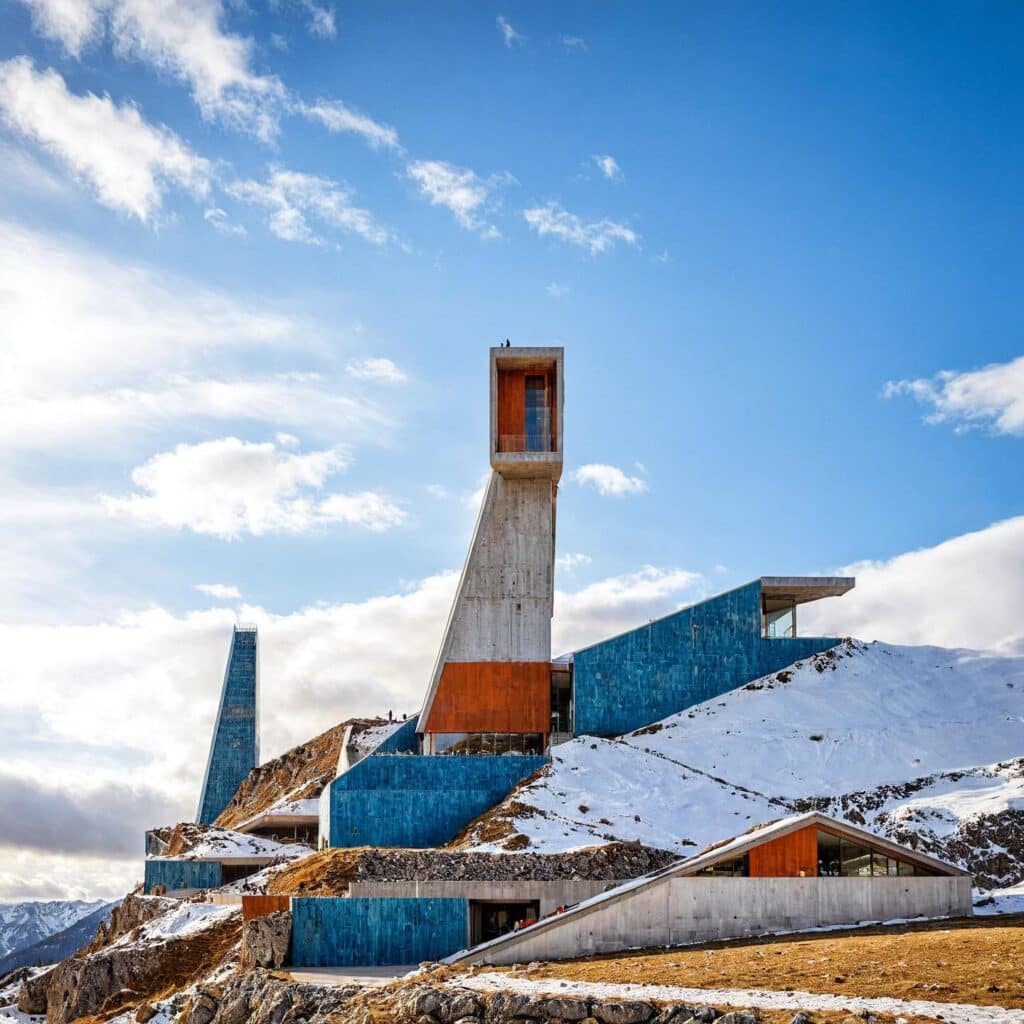Alpine Architecture: Spaces for Work and Adventure in Extreme Environments
In a world where balancing remoteness from urban chaos and maintaining productivity is increasingly vital, Alpine Architecture has emerged as an innovative solution for designing spaces that cater to adventurers and remote workers in harsh, isolated regions. This article explores the challenges and innovations of constructing buildings in extreme environments like steep slopes and high mountains, highlighting how technology and design merge to harmonize solitude with connectivity, and creativity with nature’s extremes. Extreme Environment Architecture addresses key topics including environmental challenges, redefining isolation, target audiences, architectural innovations, productivity benefits, and future obstacles.



1. Environmental Challenges: Building in Harsh Terrain
Mountainous regions pose significant construction hurdles due to steep slopes, extreme weather, and limited material access. According to the World Meteorological Organization (WMO) , “Mountain temperatures can drop below -40°C, with wind speeds exceeding 200 km/h, demanding designs that withstand such conditions.” To address these challenges, engineers use rock-anchored foundations, multi-layered insulation, and renewable energy systems (e.g., solar panels) for heating and electricity.
2. Redefining Solitude and Connectivity
These spaces aim to enhance focus and creativity through isolation while maintaining seamless global connectivity. Extreme Environment Architecture often includes large windows offering breathtaking views, while high-speed internet and soundproof meeting rooms enable efficient remote work. A study in the Journal of Environmental Psychology notes that “20 minutes of daily nature interaction boosts productivity by 15% and reduces stress.”



3. Target Audiences: Adventurers and Remote Workers
- Adventurers: Require secure, flexible spaces for gear storage and easy access to skiing or climbing areas.
- Remote Workers: Seek quiet environments for virtual meetings or tasks, supported by reliable infrastructure within the framework of Extreme Environment Architecture.
4. Architectural Innovations: Technology and Design
Alpine buildings feature smart designs tailored to rugged landscapes:
- Suspended Structures: Avoid landslide risks.
- Glass Facades: Maximize natural light and energy efficiency.
- Smart Systems: App-controlled temperature and lighting, demonstrating the capabilities of Extreme Environment Architecture.
The table below contrasts traditional and alpine architecture:
| Criteria | Traditional Buildings | Alpine Architecture |
|---|---|---|
| Wind Resistance | Moderate | High (aerodynamic design) |
| Thermal Insulation | Standard materials | Multi-layered systems |
| Energy Sources | Grid-dependent | Solar/wind energy |
5. Productivity in Nature: Benefits of Alpine Spaces
Research by Stanford University reveals that “working in natural environments enhances problem-solving skills by 50%.” Key advantages include:
- Reduced noise-related distractions.
- Creative stimulation through scenic views provided by Extreme Environment Architecture.
- Improved mood from fresh air and natural light.



6. Future Challenges
Despite advancements, obstacles remain:
- High construction costs due to material transport.
- Winter maintenance difficulties.
- Environmental impact on pristine areas.
Frequently Asked Questions (FAQ)
1. What is the primary goal of Alpine Architecture?
To create safe living and working spaces in remote areas by integrating technology and nature, fulfilling Extreme Environment Architecture standards.
2. Are these buildings eco-friendly?
Yes, they use sustainable materials and renewable energy to minimize carbon footprints.
3. How is safety ensured in rugged terrain?
Through earthquake- and wind-resistant designs, plus durable materials like stainless steel.
4. Can these buildings be part of tourist activities?
Some are designed for temporary stays or guided explorations, depending on their purpose.

Summary Table
| Aspect | Key Details |
|---|---|
| Challenges | Harsh climate, material transport, high costs |
| Innovations | Suspended structures, smart systems, renewables |
| Audiences | Adventurers, remote workers, researchers |
| Benefits | Enhanced productivity, mental health, sustainability |
Conclusion
Alpine Architecture transcends conventional design, reimagining “space” in the 21st century. By blending technology with environmental respect, these structures redefine living and working in extreme settings, offering new ways to interact with nature while maintaining human productivity and well-being. Extreme Environment Architecture is pushing the boundaries of what is possible.







